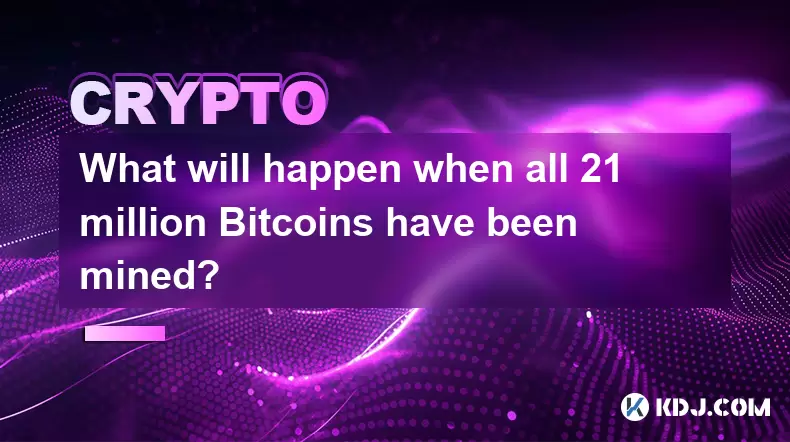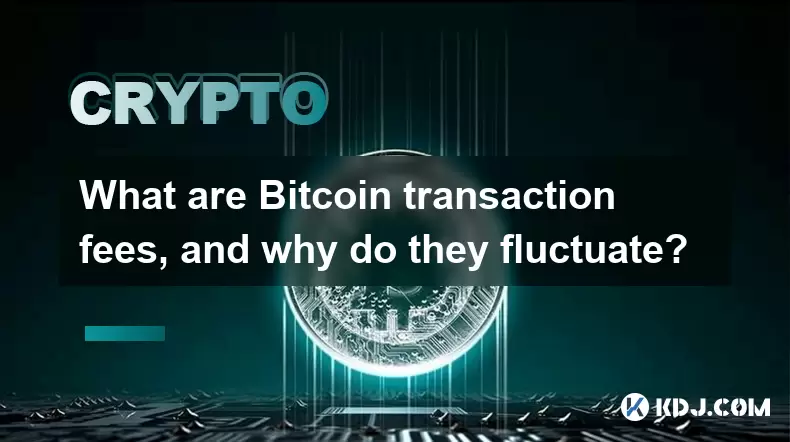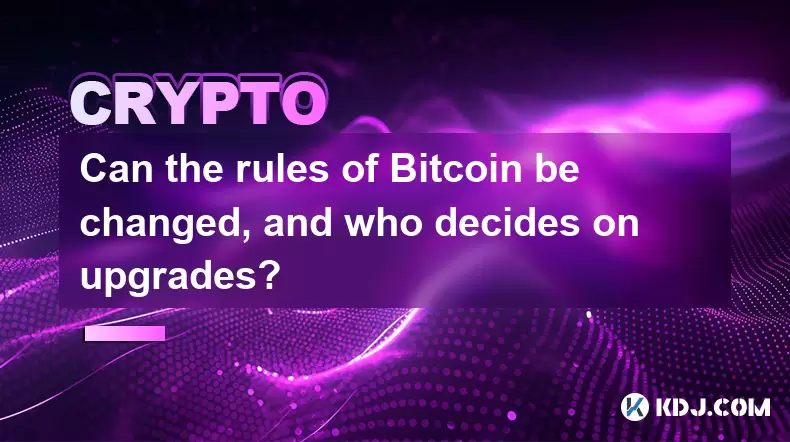-
 Bitcoin
Bitcoin $112400
-1.07% -
 Ethereum
Ethereum $3409
-3.27% -
 XRP
XRP $2.784
-6.60% -
 Tether USDt
Tether USDt $0.9997
-0.03% -
 BNB
BNB $739.3
-2.09% -
 Solana
Solana $158.0
-2.90% -
 USDC
USDC $0.9998
-0.02% -
 TRON
TRON $0.3213
-0.94% -
 Dogecoin
Dogecoin $0.1929
-5.01% -
 Cardano
Cardano $0.6974
-2.82% -
 Hyperliquid
Hyperliquid $36.69
-2.31% -
 Sui
Sui $3.327
-4.80% -
 Stellar
Stellar $0.3672
-5.18% -
 Chainlink
Chainlink $15.65
-3.07% -
 Bitcoin Cash
Bitcoin Cash $525.0
-1.68% -
 Hedera
Hedera $0.2291
-6.00% -
 Avalanche
Avalanche $20.91
-2.96% -
 Ethena USDe
Ethena USDe $1.000
0.00% -
 Toncoin
Toncoin $3.520
-1.12% -
 UNUS SED LEO
UNUS SED LEO $8.968
0.14% -
 Litecoin
Litecoin $105.7
0.26% -
 Shiba Inu
Shiba Inu $0.00001181
-1.79% -
 Polkadot
Polkadot $3.492
-2.08% -
 Uniswap
Uniswap $8.800
-3.10% -
 Dai
Dai $0.9999
-0.01% -
 Monero
Monero $289.9
-3.17% -
 Bitget Token
Bitget Token $4.243
-1.27% -
 Pepe
Pepe $0.00001006
-3.67% -
 Cronos
Cronos $0.1248
-5.68% -
 Aave
Aave $249.7
-2.50%
What will happen when all 21 million Bitcoins have been mined?
The 21 million Bitcoin cap ensures scarcity, with miners eventually relying on transaction fees for income after the last coin is mined around 2140.
Aug 03, 2025 at 09:50 am

Understanding the 21 Million Bitcoin Cap
The 21 million Bitcoin cap is a foundational rule embedded in Bitcoin’s source code, designed by Satoshi Nakamoto to ensure scarcity and prevent inflation. This hard-coded limit means that no more than 21 million BTC will ever exist. The issuance of new bitcoins occurs through a process called mining, where miners validate transactions and are rewarded with newly minted bitcoins. However, this reward undergoes a halving event approximately every four years, cutting the block reward in half. As of now, over 19.5 million bitcoins have already been mined, leaving fewer than 1.5 million left to be released over the coming decades.
The final bitcoin is projected to be mined around the year 2140, after which no new bitcoins will enter circulation. This fixed supply model differentiates Bitcoin from traditional fiat currencies, which central banks can print indefinitely. The scarcity mechanism is a core part of Bitcoin’s value proposition, mimicking precious metals like gold.
What Happens to Miners After All Bitcoins Are Mined?
Once all 21 million bitcoins are mined, miners will no longer receive block rewards. At that point, their income will rely entirely on transaction fees paid by users to have their transactions included in blocks. These fees are currently a small portion of miner revenue, but they will become the sole economic incentive for maintaining the network.
Miners must cover operational costs such as electricity, hardware, and maintenance. For the network to remain secure, transaction fees must be sufficient to incentivize miners to continue validating transactions. If fees are too low, miner participation could decline, potentially weakening network security. However, Bitcoin’s protocol allows fee levels to be determined by market demand. Users who want faster confirmations can pay higher fees, creating a competitive bidding system.
The transition to a fee-only model has been anticipated since Bitcoin’s inception. Developers expect that as Bitcoin adoption grows, the volume of transactions will increase, leading to higher aggregate fees. Additionally, Layer 2 solutions like the Lightning Network may reduce on-chain transaction load, helping to manage fee dynamics and preserve network efficiency.
Impact on Bitcoin’s Security Model
The security of the Bitcoin network depends on proof-of-work (PoW), which requires miners to expend computational power to secure the blockchain. As long as mining remains profitable, miners have a financial incentive to act honestly. After the last bitcoin is mined, the security model shifts from block rewards to transaction fees as the primary deterrent against malicious behavior.
If transaction fees are inadequate, the risk of 51% attacks increases. Such an attack occurs when a single entity controls more than half of the network’s mining power, allowing them to reverse transactions or double-spend coins. A robust fee market is essential to prevent this scenario. The Bitcoin community may respond by adjusting block size, improving fee estimation algorithms, or adopting new consensus enhancements to maintain security.
Moreover, the decentralization of mining plays a crucial role. A geographically and organizationally diverse mining ecosystem reduces the likelihood of centralized control. Continued innovation in mining hardware efficiency and renewable energy integration could also help sustain miner profitability under a fee-only regime.
Transaction Fee Dynamics and User Behavior
With no block rewards, users will directly fund network security through transaction fees. Wallet software typically includes fee estimation tools that suggest appropriate fees based on network congestion. Users can choose between priority fees for fast confirmation or lower fees for delayed processing.
Over time, the market will establish a baseline fee level that balances user affordability with miner profitability. High-value transactions, such as large transfers or institutional settlements, are likely to pay higher fees willingly. Conversely, microtransactions may rely on off-chain solutions to avoid on-chain costs.
Bitcoin’s protocol allows for fee market evolution. Future upgrades could introduce fee batching, Schnorr signatures, or other efficiency improvements to reduce data load per transaction. These optimizations help maintain low fees while supporting network growth. The interplay between user demand, block space availability, and miner incentives will shape the long-term sustainability of the fee ecosystem.
Long-Term Supply and Economic Implications
Once the 21 million supply cap is reached, Bitcoin becomes a truly deflationary asset. No new supply will enter circulation, and lost bitcoins—due to forgotten private keys or hardware failures—will permanently reduce the available supply. This increasing scarcity could enhance Bitcoin’s value as a store of wealth.
The fixed supply also reinforces Bitcoin’s role as digital gold. Unlike fiat currencies that lose purchasing power over time due to inflation, Bitcoin’s scarcity protects against devaluation. However, this deflationary nature may influence spending behavior, as holders could be reluctant to spend an asset expected to appreciate.
Economic models suggest that a mature Bitcoin economy will stabilize around a fee equilibrium, where transaction costs reflect the true cost of securing the network. Institutional adoption, regulatory clarity, and global macroeconomic conditions will all influence how this equilibrium is achieved.
Common Questions About Bitcoin’s Final Mine
Will Bitcoin stop working when all coins are mined?
No. Bitcoin will continue to operate. The network will rely on transaction fees to incentivize miners. The blockchain will keep processing transactions, and the consensus mechanism will remain intact.
Can the 21 million limit be changed?
Technically, the limit could be altered through a hard fork, but such a change would require near-universal consensus among users, miners, and developers. Given the cultural and economic significance of the 21 million cap, any attempt to increase supply would likely result in a split, with the original chain preserving the limit.
What happens to lost bitcoins after all are mined?
Lost bitcoins remain unspendable forever. Since no new coins will be created, the effective circulating supply will be less than 21 million. This further enhances scarcity and may increase the value of remaining coins.
Will transaction fees become unaffordable?
Not necessarily. Fee levels depend on network demand and block space. With advancements in scaling technologies like the Lightning Network and potential future on-chain optimizations, fees can remain low for everyday use while still compensating miners adequately.
Disclaimer:info@kdj.com
The information provided is not trading advice. kdj.com does not assume any responsibility for any investments made based on the information provided in this article. Cryptocurrencies are highly volatile and it is highly recommended that you invest with caution after thorough research!
If you believe that the content used on this website infringes your copyright, please contact us immediately (info@kdj.com) and we will delete it promptly.
- BlockDAG, SEI, Ethena: Top Crypto Performers Under the Microscope
- 2025-08-03 10:50:16
- Bitcoin Blasts Past $119K: How Institutional Adoption and Macro Shifts Fuel the Fire
- 2025-08-03 10:55:16
- Crypto, Grok, and August: Decoding the Latest Trends and Insights
- 2025-08-03 11:10:16
- Crypto, Phishing, and Your Wallet: A New Yorker's Guide to Staying Safe
- 2025-08-03 10:30:16
- Troller Cat Meme Coin Presale Soars: A New King in the Crypto Jungle?
- 2025-08-03 10:30:16
- Grayscale, Altcoin Trust, and Mid-Cap Mania: What's the Deal?
- 2025-08-03 08:50:16
Related knowledge

What is the difference between holding Bitcoin on an exchange versus in a personal wallet?
Aug 02,2025 at 03:15pm
Understanding Custodial vs Non-Custodial ControlWhen holding Bitcoin on an exchange, users are essentially entrusting their assets to a third party. E...

Can governments shut down or ban Bitcoin?
Aug 02,2025 at 09:44am
Understanding Bitcoin’s Decentralized StructureBitcoin operates on a decentralized peer-to-peer network, meaning it is not controlled by any single en...

What will happen when all 21 million Bitcoins have been mined?
Aug 03,2025 at 09:50am
Understanding the 21 Million Bitcoin CapThe 21 million Bitcoin cap is a foundational rule embedded in Bitcoin’s source code, designed by Satoshi Nakam...

What are Bitcoin transaction fees, and why do they fluctuate?
Aug 03,2025 at 01:51am
Understanding Bitcoin Transaction FeesBitcoin transaction fees are small amounts of Bitcoin paid by users to miners for processing and confirming tran...

Can the rules of Bitcoin be changed, and who decides on upgrades?
Aug 02,2025 at 06:36am
Understanding Bitcoin's Governance ModelBitcoin operates without a central authority, which means no single entity has the power to unilaterally chang...

Who controls the Bitcoin network if there is no central company or bank?
Aug 02,2025 at 06:01pm
Understanding Decentralized Control in BitcoinThe Bitcoin network operates without a central authority, which raises the question of who controls it. ...

What is the difference between holding Bitcoin on an exchange versus in a personal wallet?
Aug 02,2025 at 03:15pm
Understanding Custodial vs Non-Custodial ControlWhen holding Bitcoin on an exchange, users are essentially entrusting their assets to a third party. E...

Can governments shut down or ban Bitcoin?
Aug 02,2025 at 09:44am
Understanding Bitcoin’s Decentralized StructureBitcoin operates on a decentralized peer-to-peer network, meaning it is not controlled by any single en...

What will happen when all 21 million Bitcoins have been mined?
Aug 03,2025 at 09:50am
Understanding the 21 Million Bitcoin CapThe 21 million Bitcoin cap is a foundational rule embedded in Bitcoin’s source code, designed by Satoshi Nakam...

What are Bitcoin transaction fees, and why do they fluctuate?
Aug 03,2025 at 01:51am
Understanding Bitcoin Transaction FeesBitcoin transaction fees are small amounts of Bitcoin paid by users to miners for processing and confirming tran...

Can the rules of Bitcoin be changed, and who decides on upgrades?
Aug 02,2025 at 06:36am
Understanding Bitcoin's Governance ModelBitcoin operates without a central authority, which means no single entity has the power to unilaterally chang...

Who controls the Bitcoin network if there is no central company or bank?
Aug 02,2025 at 06:01pm
Understanding Decentralized Control in BitcoinThe Bitcoin network operates without a central authority, which raises the question of who controls it. ...
See all articles

























































































